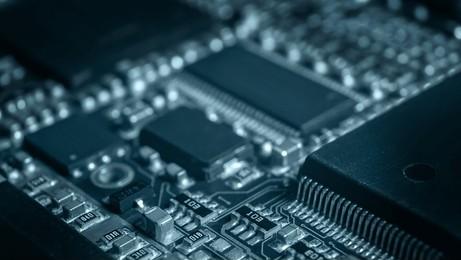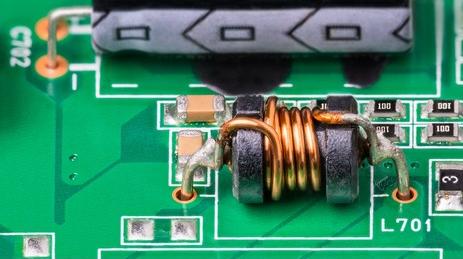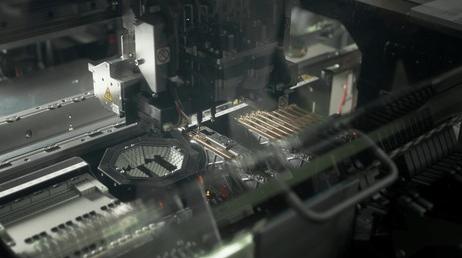Content Menu
● Introduction
● What is Surface Mount Assembly?
● The Evolution of Surface Mount Technology
● Benefits of Surface Mount Assembly
● Applications of Surface Mount Assembly
● Challenges in Surface Mount Assembly
● Future Trends in Surface Mount Assembly
● Conclusion
● FAQ
>> 1. What does "surface mount assembly" mean?
>> 2. What are some advantages of using surface mount technology?
>> 3. In which industries is surface mount assembly commonly used?
>> 4. What challenges does surface mount assembly present?
>> 5. What future trends are expected in surface mount assembly?
Introduction
In the rapidly evolving world of electronics, surface mount assembly (SMA) has become a cornerstone of modern manufacturing processes. This method of assembling electronic components directly onto the surface of printed circuit boards (PCBs) has transformed the landscape of electronics production, enabling faster, more efficient, and cost-effective manufacturing. Understanding the significance of surface mount assembly is crucial for anyone involved in electronics design, manufacturing, or repair.

What is Surface Mount Assembly?
Surface mount assembly refers to a technique used in electronics where components are mounted directly onto the surface of a PCB rather than being inserted into holes as in traditional through-hole technology. This method utilizes surface mount devices (SMDs), which are smaller and lighter than their through-hole counterparts. The primary advantage of this assembly technique lies in its ability to facilitate high-density circuit designs, allowing for more components to be placed on a single board.
The Evolution of Surface Mount Technology
The origins of surface mount technology can be traced back to the 1960s when engineers sought ways to reduce the size and weight of electronic devices. As consumer demand for smaller, more powerful gadgets grew, manufacturers began exploring new assembly methods that would allow for compact designs without sacrificing performance. By the 1980s, surface mount technology had gained widespread acceptance in the industry, leading to significant advancements in both component design and manufacturing processes.
Benefits of Surface Mount Assembly
The importance of surface mount assembly in electronics can be attributed to several key benefits:
- Space Efficiency: SMDs are significantly smaller than traditional components, allowing for more compact circuit designs. This is particularly advantageous in applications where space is at a premium, such as mobile devices and wearables.
- Higher Component Density: Surface mount assembly enables manufacturers to place more components on a single PCB. This increased density can lead to enhanced functionality and performance.
- Improved Performance: SMDs typically have shorter leads than through-hole components, which reduces inductance and resistance. This can result in improved electrical performance and signal integrity.
- Automated Assembly: The nature of surface mount assembly lends itself well to automation. Automated pick-and-place machines can quickly and accurately position SMDs on PCBs, significantly speeding up the manufacturing process while reducing labor costs.
- Cost-Effectiveness: Although the initial investment in surface mount assembly equipment may be higher than traditional methods, the long-term cost savings associated with reduced labor and material waste make it a financially viable option for many manufacturers.

Applications of Surface Mount Assembly
Surface mount assembly is widely used across various industries due to its versatility and efficiency. Some notable applications include:
- Consumer Electronics: From smartphones to laptops, surface mount assembly plays a crucial role in the production of consumer electronics, enabling manufacturers to create sleek and compact devices.
- Automotive Electronics: Modern vehicles are equipped with numerous electronic systems that require reliable and efficient assembly methods. Surface mount technology is essential for producing automotive control units, sensors, and infotainment systems.
- Medical Devices: In the medical field, precision and reliability are paramount. Surface mount assembly allows for the creation of small yet powerful medical devices that can perform critical functions with high accuracy.
- Telecommunications: The telecommunications industry relies heavily on surface mount technology for producing equipment such as routers, switches, and base stations that require high-performance components.
Challenges in Surface Mount Assembly
While surface mount assembly offers numerous advantages, it also presents certain challenges that manufacturers must navigate:
- Thermal Management: Due to the high density of components on a PCB, managing heat dissipation becomes critical. Effective thermal management strategies must be implemented to prevent overheating and ensure reliable operation.
- Design Complexity: Designing PCBs for surface mount assembly requires specialized knowledge and tools. Engineers must consider factors such as component placement, signal integrity, and manufacturability during the design phase.
- Inspection and Quality Control: The small size of SMDs makes them more challenging to inspect visually compared to larger through-hole components. Automated optical inspection (AOI) systems are often employed to ensure quality during production.
Future Trends in Surface Mount Assembly
As technology continues to advance, several trends are shaping the future of surface mount assembly:
- Miniaturization: The demand for smaller electronic devices will drive further miniaturization of components. Manufacturers will need to innovate continuously to produce even smaller SMDs without compromising performance.
- Flexible Electronics: The rise of flexible electronics presents new opportunities for surface mount assembly. Manufacturers are exploring ways to adapt existing techniques to accommodate flexible substrates while maintaining reliability.
- Sustainability: With growing concerns about environmental impact, manufacturers are focusing on sustainable practices within surface mount assembly processes. This includes reducing waste during production and developing recyclable materials for SMDs.
Conclusion
Surface mount assembly is undeniably important in the field of electronics due to its numerous advantages over traditional methods. Its ability to facilitate high-density designs while improving performance and reducing costs makes it an essential technique for modern manufacturing. As technology continues to evolve, so too will surface mount assembly processes, paving the way for even more innovative electronic devices that meet the demands of consumers across various industries.
In summary, understanding the meaning and significance of surface mount assembly is vital for anyone involved in electronics design or manufacturing. By embracing this technology, manufacturers can stay competitive in an ever-changing market while delivering high-quality products that meet consumer needs.

FAQ
1. What does "surface mount assembly" mean?
Surface mount assembly refers to a method where electronic components are mounted directly onto the surface of a printed circuit board (PCB), allowing for more compact designs compared to traditional through-hole methods.
2. What are some advantages of using surface mount technology?
The advantages include space efficiency due to smaller components, higher component density on PCBs, improved electrical performance, suitability for automated assembly processes, and overall cost-effectiveness in manufacturing.
3. In which industries is surface mount assembly commonly used?
Surface mount assembly is widely used in consumer electronics, automotive electronics, medical devices, telecommunications equipment, and various other industries requiring efficient electronic manufacturing.
4. What challenges does surface mount assembly present?
Challenges include managing thermal issues due to high component density, increased design complexity requiring specialized knowledge, and ensuring quality control during production due to the small size of SMDs.
5. What future trends are expected in surface mount assembly?
Future trends include further miniaturization of components, adaptation for flexible electronics applications, and a focus on sustainability within manufacturing processes.




















